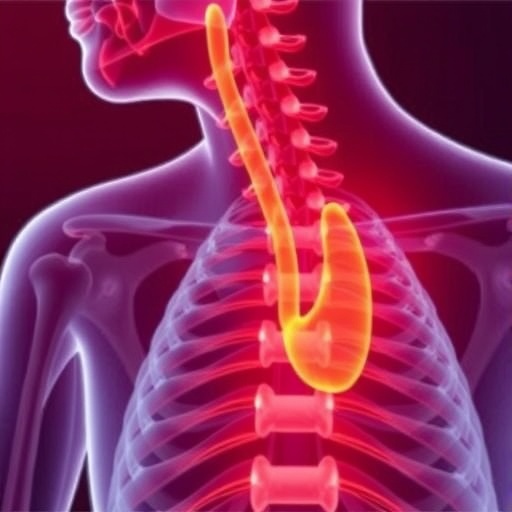The European Society of Endocrinology (ESE) has unveiled a meticulously revised Clinical Practice Guideline for the treatment of chronic hypoparathyroidism in adults, marking a significant advancement in the field of endocrinology. Published in the prestigious European Journal of Endocrinology in November 2025, this open-access document reflects the evolving landscape of hypoparathyroidism diagnosis and management, based on comprehensive multidisciplinary collaboration and cutting-edge clinical evidence.
Chronic hypoparathyroidism, a rare endocrine disorder characterized by insufficient production of parathyroid hormone (PTH), disrupts calcium homeostasis and can lead to profound biochemical and clinical complications. The updated guideline is the product of a rigorous development process led by Professor Jens Bollerslev from the Faculty of Medicine at the University of Oslo, Norway. The multidisciplinary expert panel engaged clinicians, methodologists, patient representatives, and specialists across nephrology, endocrine surgery, and other relevant disciplines to provide practical and evidence-based recommendations for health care providers managing this complex condition.
One of the most noteworthy changes in the revised guideline is the redefinition of chronic hypoparathyroidism diagnostic criteria. Previously, the condition was identified when hypoparathyroidism symptoms and lab abnormalities persisted for six months or more post-neck surgery. However, an extensive systematic review analyzing data from 14 studies totaling nearly 9,000 patients revealed that 7.5% more patients regained parathyroid function between six and twelve months postoperatively. Consequently, the expert panel extended the chronicity threshold to 12 months, ensuring a more accurate and clinically meaningful diagnosis.
This new operational definition underscores the importance of differentiating transient hypoparathyroidism, common shortly after thyroidectomy or parathyroid surgery, from chronic cases that necessitate long-term management strategies. The refined diagnostic window guides clinicians in making judicious decisions about initiating permanent therapy and monitoring protocols, ultimately enhancing patient outcomes and resource utilization.
Beyond diagnostic parameters, the guideline introduces a detailed and clear therapeutic algorithm that delineates the transition from conventional treatments toward parathyroid hormone replacement therapy (PTH-RT). Conventional management typically involves calcium supplementation and active vitamin D analogs to maintain serum calcium levels; however, this approach may not adequately address the disease’s pathophysiology or prevent complications such as renal calcifications, hypercalciuria, and impaired quality of life.
The algorithm offers evidence-based guidance on when PTH-RT should be considered, highlighting specific clinical scenarios such as refractory hypocalcemia despite standard therapy, reduced quality of life, and inability to normalize biochemical parameters. It also provides protocols for PTH administration, monitoring, and dose titration, emphasizing an individualized therapeutic approach to optimize efficacy and minimize adverse effects.
An essential feature of the revised guideline is its emphasis on multidisciplinary collaboration and patient-centered care. By involving patient representatives and experts from various specialties in its development, the document addresses both clinical efficacy and patient quality of life comprehensively. Furthermore, ESE has scheduled a free online Hypoparathyroidism Patient Forum in November 2025, where this guidance will be discussed in detail by Professor Bollerslev, facilitating broader dissemination and interactive engagement with patients and healthcare providers.
The endorsement of the guideline by influential bodies such as the European Society of Endocrine Surgeons and the Endocrine Society of Australia underscores its international relevance and potential to harmonize global clinical practice. Through rigorous peer review and wide consultation with members and patient groups, the guideline represents a high standard of evidence-informed clinical recommendations.
Moreover, the ESE Clinical Committee is expanding its guideline portfolio to meet other critical needs in endocrinology. Upcoming publications include Joint Guidance on healthcare transition from pediatric to adult endocrine care in collaboration with the European Society for Paediatric Endocrinology (ESPE), and a 2026 joint guideline with the Endocrine Society (US) addressing arginine vasopressin deficiency (AVP-D).
This revised guideline is positioned to revolutionize the clinical management paradigm of chronic hypoparathyroidism, offering nuanced, up-to-date frameworks that reflect the latest scientific insights and patient priorities. As understanding of the disease deepens and new therapeutic modalities emerge, ongoing guideline evolution will remain pivotal in aligning clinical practice with best available evidence.
Clinicians are encouraged to access the full text of the guideline published in the European Journal of Endocrinology, which details the systematic reviews, expert consensus, and pragmatic recommendations that underpin the document. Additionally, video interviews with Professor Bollerslev provide valuable personal insights into the guideline’s development and envisioned impact.
Overall, the revised clinical guideline embodies a landmark step in endocrinology, promising to enhance both diagnostic accuracy and individualized treatment of adult patients with chronic hypoparathyroidism worldwide.
Subject of Research: Chronic Hypoparathyroidism Treatment and Management
Article Title: Revised Clinical Practice Guideline for the Treatment of Chronic Hypoparathyroidism in Adults
News Publication Date: November 13, 2025
Web References: https://www.ese-hormones.org/publications/guidelines/
References: DOI: 10.1093/ejendo/lvaf222
Image Credits: European Society of Endocrinology
Keywords: Chronic Hypoparathyroidism, Parathyroid Hormone Replacement Therapy, Endocrinology, Clinical Practice Guideline, Calcium Homeostasis, Multidisciplinary Collaboration, European Society of Endocrinology, Patient-Centered Care




